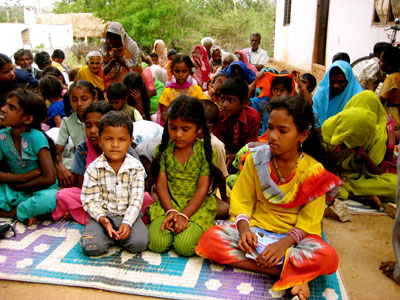All Nonfiction
- Bullying
- Books
- Academic
- Author Interviews
- Celebrity interviews
- College Articles
- College Essays
- Educator of the Year
- Heroes
- Interviews
- Memoir
- Personal Experience
- Sports
- Travel & Culture
All Opinions
- Bullying
- Current Events / Politics
- Discrimination
- Drugs / Alcohol / Smoking
- Entertainment / Celebrities
- Environment
- Love / Relationships
- Movies / Music / TV
- Pop Culture / Trends
- School / College
- Social Issues / Civics
- Spirituality / Religion
- Sports / Hobbies
All Hot Topics
- Bullying
- Community Service
- Environment
- Health
- Letters to the Editor
- Pride & Prejudice
- What Matters
- Back
Summer Guide
- Program Links
- Program Reviews
- Back
College Guide
- College Links
- College Reviews
- College Essays
- College Articles
- Back
The Indian Caste System
Even though India has seen major economic and social improvements from the time of the British Empire to today, the ancient Hindu caste system is still in place. People in India, to this day, continue to face discrimination depending on their caste, even though, under the Indian Constitution, it is technically illegal. The Jati, or Caste system in India, segregates the Indian people and continues to allows discrimination towards people of lower castes.
The caste system in India can be traced as far back as 1,000 years BCE, with the Manusmriti text "acknowledging and justifying the caste system as the basis of order and regularity of society" ("What Is India's Caste System?"). Castes determine what jobs a person is able to pursue and what social interactions they can have (Manian). When the British came to India, they supported and exploited the caste system, by allying themselves with the Brahmins (the most powerful caste) (Szczepanski). In the early and mid 20th century, the Indian people protested and revolted against the unfairness of the caste system (Jones).
First, the caste system in India, in modern-day society, segregates the different types of Indian people. A perfect example of this segregation is that marriage between castes is still looked down upon and rarely accepted. When choosing a wife, caste and skin color are the most important aspects (Thekaekara). The wife must be fair-skinned and of the same caste (Thekaekara). Many couples who fall in love but are not from the same caste are denied marriage by their families. The Indian population is divided into four main castes: Brahmin, Kshatriya, Vaishya and Shudra (Manian). The lowest caste in the system, is a group of people known as the Dalits, or “untouchables” (Jones). This literally means that people of higher castes don’t touch anything that Dalits have touched ("India's Dalits Still Fighting Untouchability").
Furthermore, the caste system in India, even today, allows discrimination towards people of lower castes. Although discrimination depending only on caste was made technically illegal in the late 1940s, it didn’t stop caste-based prejudice and discrimination to continue (Jones). This can, many times, include violence and sexual assault. The Northern Indian state of Rajasthan is the state with the highest atrocities towards Dalits. In many Rajasthani villages, Dalits are not allowed to take water from the public well and are not allowed to enter the temple (Couderé). Dalits have also been discriminated against for seemingly foolish acts, such as sporting a mustache in public (Avora). A very terrible example of caste-based violence is an incident that occurred in a Kherlanji village in September 2006. An entire Dalit family was killed after being stripped and beaten by men from a higher caste ("India: ‘Hidden Apartheid’ Of Discrimination Against Dalits"). The reason for their murders was a land dispute between the Dalit family and upper-caste farmers. Another important aspect of caste discrimination in India is the exploitation of labor. “According to unofficial estimates, more than 1.3 million Dalits – mostly women – are employed as manual scavengers to clear human waste from dry pit latrines” ("India: ‘Hidden Apartheid’ Of Discrimination Against Dalits"). Jobs such as these are deemed to degrading and dirty for non-Dalits to perform ("India: ‘Hidden Apartheid’ Of Discrimination Against Dalits").
Although many may claim that it is an important part of Hindu culture, the caste system in India is ruining the lives of more than 200 million Dalits ("India: Official Dalit Population Exceeds 200 Million - International Dalit Solidarity Network"). As a result of the caste system, the Indian population is segregated, and discrimination continues towards lower castes.

Similar Articles
JOIN THE DISCUSSION
This article has 0 comments.
